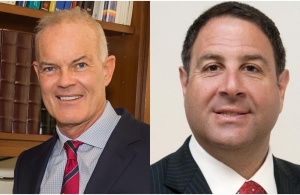How to Prevent Marathon Injuries, Part 1


PART 1
I hope this three part article series finds its way into your hands before your feet complete those 26.2 miles and cross the finish line. If you have managed to stay healthy throughout your pre-race training or only had to battle a few roadblocks, you can already consider yourself a winner. However, if you are one of the unlucky runners that finds yourself sidelined and are looking for advice on what to do next or maybe you find that “knowledge is power” when it comes to preventing an injury, then this article is for you!
ACHILLES TENDONITIS:
- A common injury among runners that can ruin an entire running season if not treated properly.
- This injury is characterized by progressive pain in the Achilles tendon at the beginning of a run that dulls after 2-3 miles of running. Shortly thereafter, it can return with a vengeance and linger long after the run is over.
- In theory, the Achilles tendon is progressively subjected to micro-tears, causing pain and swelling. The real problem is that the Achilles tendon has poor vascularity and thus poor healing properties.
- Classic treatment of this was to place patients in a cast and immobilize the tendon for 6 weeks. For an athlete, this can be detrimental and have a profound effect on their physical conditioning.
- Today, we use a CAM boot (a walking boot) for a period of two weeks to reduce the mechanical load through the Achilles, in combination with proper physical therapy.
- Even newer modalities using PRP (platelet rich plasma) and shockwave therapy have shown success in over half of patients. Shockwave uses a probe that delivers a sound wave to the Achilles to stimulate blood vessels and growth factors to potentiate repairs.
- These two modalities have reduced the time taken for runners to get back to their previous level of sport by an order of magnitude. It is important to identify Achilles tendinosis at an early stage clinically and ultimately through radiographic diagnosis either through ultrasound or MRI. If it is identified early, it can be treated very effectively with appropriate physical therapy, to get athletes, whether professional or recreational, back to their sport faster.
Treatment of Achilles Tendinitis
Achilles tendinitis responds very well to rest and rehabilitation. Central to proper treatment of tendinitis is identifying the cause of the problem. Some examples might include:
- change of intensity
- a muscle not properly warmed up or stretched prior to activity
- training surface changes (hard and soft)
- running too hard or too much
- continual, repetitive jumping and cutting
- changing shoes, ill-fitting shoes or shoes that are not supportive
By limiting or removing the cause, we can slow down or reverse the inflammatory response and cure the tendinitis. As the inflammation surrounding the tendon decreases, the pain will go away! As the runner starts to feel less pain and tightness in the area, based on the increased flexibility and the treatment suggested, there should be a modified progression for a return to running.
With Achilles tendinitis, runners often have a lot of success if they return to training at a 50% of their normal level of activity. This means simply cutting the athlete’s work load in half! If successful, the work load builds gradually up to 75%, 80% and eventually 100%. If the tendinitis becomes more exaggerated, the athlete should seek appropriate medical care in the form of a good physical therapist or athletic trainer.
In the clinic, we will be able to use different types of modalities and devices to increase circulation to the tendon, which will assist in decreasing the swelling and inflammation within the tendon. The physical therapist will then progress with different massage and stretching techniques. When adequate time has been allowed for healing of the area, a progression of therapeutic exercises will assist in safely returning the athlete’s strength and coordination.
If the Achilles tendinitis is only causing soreness and pain, and is not affecting the athletes gait or performance, I recommend:
- Heel lifts bilaterally (in both shoes)
- A good warm-up and stretching
- Running routine modification
For more information on common running injuries, injury prevention and treatment please check back for the next article on acute and chronic ankle injuries.

John G. Kennedy, MD
Dr. Kennedy is currently the clinical director of the running clinic at Hospital for Special Surgery. He graduated from Royal College of Surgeons in 1989 and has since practiced in both Ireland & the U.S. He specializes in osteochondral injuries, Achilles tendon injuries, ankle instability, and ligament reconstruction and has a primary interest in lower limb surgery, particularly sports-related injuries.





















